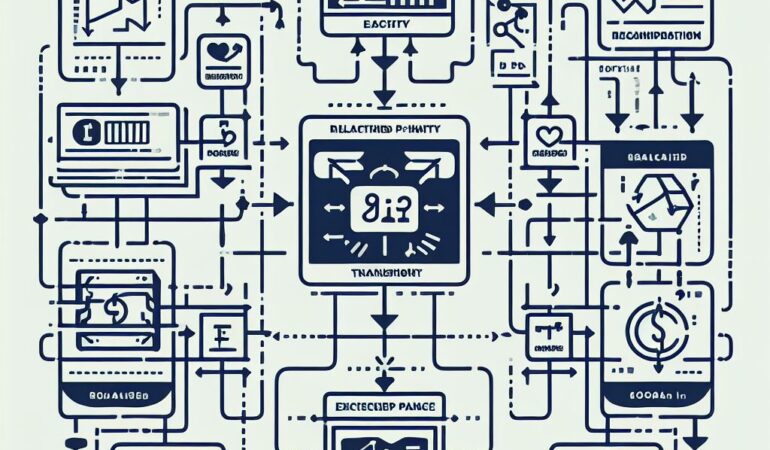Imagine you’ve found the perfect investment property, but it’s owned by a family member or close friend. Don’t worry, with the right knowledge and strategy, you can still make it work.
In this step-by-step guide, we’ll show you how to structure related party transactions in a 1031 exchange. From understanding the rules to ensuring compliance, we’ll cover everything you need to know to navigate this complex process successfully.
So let’s get started!
Key Takeaways
- Clearly define the terms of the sale agreement, including purchase price and payment terms.
- Obtain independent appraisals to validate the transaction and document them as supporting evidence.
- Ensure the transaction is consistent with fair market value and has a valid business purpose.
- Properly document and report the related party transaction to the IRS, following all guidelines and regulations.
Understanding Related Party Transactions
To understand related party transactions in a 1031 exchange, you need to know the key factors that define these types of transactions. Related party transactions occur when two parties involved in the exchange have a pre-existing relationship, such as being family members or having a business connection. It’s important to note that related party transactions are subject to stricter rules and regulations compared to transactions involving unrelated parties.
One key factor to consider is the relationship between the parties involved. The IRS defines related parties as individuals who are directly related, such as siblings, spouses, parents, and children, as well as individuals who’ve a business relationship, such as a partnership or a corporation. These relationships can significantly impact the eligibility and tax consequences of a related party transaction.
Another important factor is the fairness of the transaction. In a related party transaction, the exchange must be conducted at fair market value to comply with the IRS regulations. It’s crucial to ensure that the exchange isn’t structured solely for tax avoidance purposes.
Additionally, related party transactions require additional documentation and reporting. It’s essential to maintain thorough records of the transaction and provide the necessary documentation to the IRS.
Understanding these key factors will help you navigate the complexities of related party transactions in a 1031 exchange. It’s recommended to consult with a qualified tax professional to ensure compliance with all applicable rules and regulations.
Identifying Eligible Parties
To identify eligible parties for a related party transaction in a 1031 exchange, follow these steps.
First, determine if the related party falls under the definition provided by the Internal Revenue Service (IRS). The IRS defines related parties as family members, business entities that are under common control, and anyone who’s a direct or indirect interest in the property being exchanged. It’s important to note that spouses and siblings aren’t considered related parties unless they meet one of the other criteria.
Next, verify that the related party meets the holding requirements. The IRS requires that both the relinquished property and the replacement property be held by the related party for a minimum of two years following the exchange. This is to ensure that the transaction isn’t solely for the purpose of avoiding taxes.
Once you have determined that the related party meets the definition and holding requirements, it’s crucial to document the relationship and the intent behind the exchange. This documentation should include a detailed explanation of the business purpose of the transaction and any economic substance it may have.
Lastly, consult with a qualified intermediary or a tax professional to ensure compliance with all IRS regulations and guidelines. They can provide guidance on structuring the transaction and help navigate any potential pitfalls.
Structuring the Sale Agreement
Now that you have identified eligible parties for a related party transaction in a 1031 exchange, it’s time to structure the sale agreement. This step is crucial to ensure that the transaction meets the requirements set forth by the IRS. Here are three important considerations when structuring the sale agreement:
- Clearly define the terms: The sale agreement should include all the necessary details such as the purchase price, payment terms, and any contingencies. It’s important to be thorough and precise in defining these terms to avoid any confusion or disputes later on.
- Include specific language for related party transactions: Since you’re engaging in a related party transaction, it’s essential to include language that clearly indicates the relationship between the parties involved. This will help establish the legitimacy of the transaction and ensure compliance with IRS regulations.
- Obtain independent appraisals: To further validate the transaction, it’s recommended to obtain independent appraisals for the properties involved. This will provide an objective assessment of the fair market value and help substantiate the exchange. Make sure to document these appraisals and include them as supporting evidence in the sale agreement.
Meeting IRS Requirements
To meet IRS requirements for a related party transaction in a 1031 exchange, it’s essential to adhere to specific guidelines and regulations. The IRS has established these requirements to ensure that transactions between related parties are conducted at arm’s length and for a valid business purpose. Failing to meet these requirements can result in the disallowance of the 1031 exchange and potential tax consequences.
One of the key requirements is that the transaction must be structured in a way that’s consistent with fair market value. This means that the property being exchanged must be valued at its current fair market value, and the exchange ratio must be based on that value. It’s important to accurately determine the fair market value of the properties involved to avoid any potential issues.
Another requirement is that the related parties must have a valid business purpose for the exchange. This means that the exchange should be driven by legitimate business reasons, such as consolidating properties, diversifying investments, or improving cash flow. It’s crucial to document these business purposes and ensure that they’re well-supported.
Lastly, the transaction should be properly documented and reported to the IRS. This includes filing Form 8824, Like-Kind Exchanges, which provides details of the exchange to the IRS. Additionally, any agreements or contracts related to the exchange should be carefully drafted to reflect the fair market value and business purpose of the transaction.
To ensure compliance and success in structuring related party transactions in a 1031 exchange, it’s important to follow these guidelines and regulations set forth by the IRS. By doing so, you can minimize the risk of IRS scrutiny and enjoy the tax benefits of a properly executed 1031 exchange.
In the next section, we’ll discuss how to ensure compliance and success in more detail.
Ensuring Compliance and Success
To ensure compliance and achieve success in structuring related party transactions in a 1031 exchange, you must carefully follow the guidelines and regulations set forth by the IRS. Here are three key steps to help you navigate this process:
- Document the Intent: It’s crucial to clearly document the intent of the parties involved in the related party transaction. This includes establishing a valid business purpose and ensuring that the transaction isn’t solely for tax avoidance purposes. Proper documentation will provide evidence of a legitimate transaction and help support your case if audited by the IRS.
- Fair Market Value: The related party transaction must be conducted at fair market value. This means that the price paid or received should reflect what a willing buyer and seller would agree upon in an open market transaction. It’s important to obtain independent appraisals or valuations to justify the fair market value of the property or assets involved.
- Proper Reporting: Accurate reporting of the related party transaction is crucial. This includes reporting the transaction on your tax return and providing any required supporting documentation. Failure to properly report related party transactions can result in penalties and additional scrutiny from the IRS.
Frequently Asked Questions
Can Related Party Transactions Be Used in a 1031 Exchange for Any Type of Property?
Yes, related party transactions can be used in a 1031 exchange for any type of property. This allows you to transfer ownership between family members or entities with a pre-existing relationship.
Is There a Limit on the Number of Related Party Transactions That Can Be Included in a 1031 Exchange?
Yes, there is a limit on the number of related party transactions that can be included in a 1031 exchange. For example, you can only have one related party transaction per tax year.
Are There Any Specific Rules or Regulations Regarding the Pricing of Properties in Related Party Transactions for a 1031 Exchange?
Yes, there are specific rules and regulations regarding the pricing of properties in related party transactions for a 1031 exchange. It is important to ensure that the transaction is conducted at fair market value to comply with IRS guidelines.
Can Related Party Transactions Be Used to Exchange Properties Located in Different States?
Yes, related party transactions can be used to exchange properties located in different states. However, it is important to comply with the specific rules and regulations regarding pricing in these transactions.
What Happens if the IRS Determines That a Related Party Transaction in a 1031 Exchange Does Not Meet Their Requirements?
If the IRS determines that a related party transaction in a 1031 exchange doesn’t meet their requirements, you may face consequences such as disqualification of the exchange, tax liabilities, penalties, and potential audit scrutiny.




